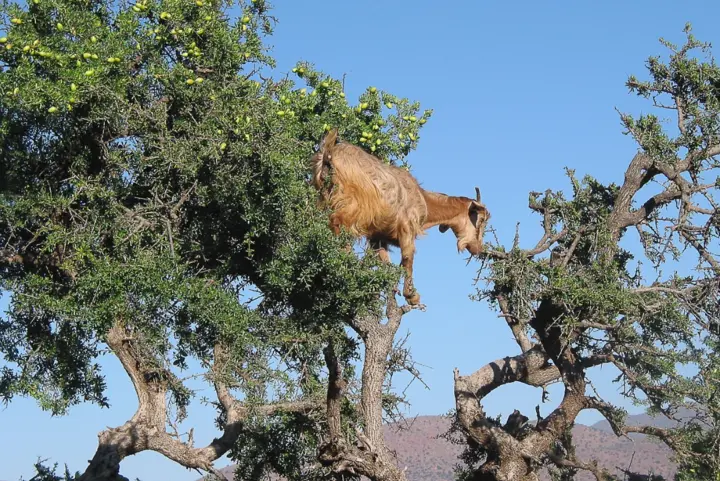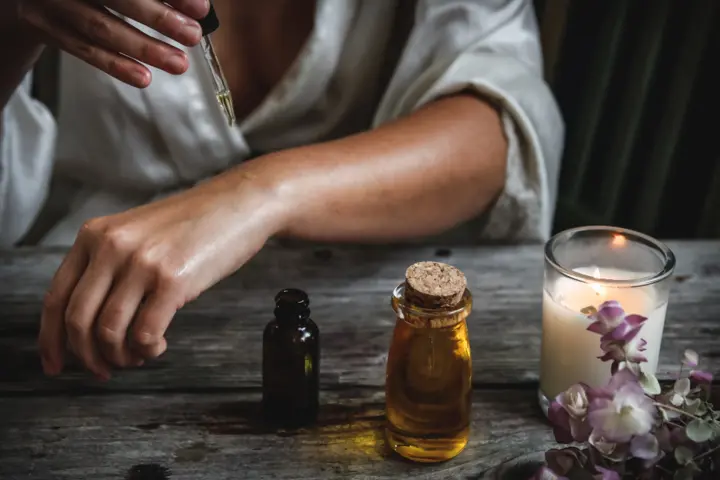Argan oil: a miracle in the Moroccan Sahara
You may have heard of what the people of Morocco discovered centuries ago: argan tree oil works wonders – the kind of antioxidant, beauty-supporting and health wonders that may seem so fascinating that it's hard to believe if it doesn't have a real science behind it.
Show key points
- Argan oil, derived from the seeds of the argan fruit, is renowned for its antioxidant properties and health benefits, with traditional uses dating back centuries in Morocco.
- Native only to a small area of Morocco, argan trees form a critical ecosystem that combats desertification and sustains both local biodiversity and human communities.
- Harvesting and processing argan oil is a labor-intensive, largely manual process that preserves the quality of the oil while providing essential income for local populations.
- ADVERTISEMENT
- The argan industry plays a vital role in empowering women, as women-led cooperatives have become key players in production and sales, transforming gender roles in rural Moroccan society.
- While goats are known for climbing argan trees to eat the fruit, this behavior has been exploited for tourism, sometimes leading to inhumane practices which visitors are encouraged not to support.
- The global demand for argan products helps to promote sustainability, offering economic resilience to communities, improving education, and allowing for broader social development.
- Argan oil production is deeply rooted in tradition and environmental stewardship, with the trees also serving as a critical food source for livestock in a fragile and arid landscape.
But there's more to the story of argan oil. Argan trees have been around for millions of years. Today, it grows only on a narrow strip of semi-Sahara between the Atlantic coast of Morocco and the Atlas Mountains. This is where it forms the backbone of a complex and fragile ecosystem that Moroccans learn to take advantage of and harvest with respect.
For local communities, argan oil is an important source of income and food (the oil is delicious and rich in health benefits). It is also a key source of women's empowerment in a male-dominated culture. When it comes to argan oil, there's much more than just beautiful skin at stake.
Recommend
The small piece of Morocco that they call home

Driving west from Marrakech towards the Atlantic coast, you will quickly encounter undulating hills of argan groves. This is the original habitat of the argan tree, and is now a UNESCO Biosphere Reserve.
The argan ecosystem represents the last natural barrier to the Sahara Desert in the southwest. Protecting them is a matter of life and death for the flora and fauna of this region, including the people who have lived here for thousands of years.
The argan trees themselves are dirty, and their trunks are knotted twisted into braids by the harsh winds. Without disturbance, she can live for 200 years. Argan trees are remarkably drought-resistant, hibernating when necessary and then returning to life with their leaves when water returns.
Inside the fruit, under the peel and bitter pulp, there is a hard, shiny walnut that resembles almonds in shape and size. This nut can be opened skillfully and forcefully to reveal between one to three small seeds. These seeds are a source of rich and exceptional argan oil.
Leaves and fruits are also an important source of food for camels, goats, sheep and other animals. (The animals digest the flesh of the fruit and expel the "cleaned" walnuts that the producers collect from the orchard floor, grateful for the help.)
From fruit to nut to seed to oil

The fruit of Argan is fully ripe. They emerge from the yellow flowers of the argan tree in spring and ripen over the course of a year. The fruit is usually ready for harvest in June or July and falls to the ground when fully ripe, unless the goat or camel first reaches it.
Ripe fruits are collected and dried in the open air until they reach this wilted brown stage. The skin pulp is then stripped away, exposing the nut inside. This is usually done manually, even in large-scale commercial production.
An argan nut is a thick, hard cover that protects the seeds inside, unlike olive or peach kernels. Their halves are joined together by a strong membrane, and it takes a lot of effort to open the nut without damaging the seeds inside.
As with fruit harvesting, be careful not to ramp the seeds, which can damage the oil they contain. To extract high-quality oil, this step must be done manually.
Argan oil is extracted by a manual stone mill or with the help of a commercial cold-pressed extractor, which carefully applies the pressure without heat to preserve the nutrients of the oil.
The reality of goats in argan trees

One manifestation of the growing global interest in argan oil is the development of a kind of legend surrounding goats climbing argan trees to harvest fruit.
Goats are lovers of argan fruit, leaves and any other food they can find. If they leave their own freedom, they will eat everything that is on Earth. When that's over, they'll happily climb into the trees to find more, jumping on branches that bend under their own weight.
While it is true that the collected nuts are already used in production, most argan oil is produced from fruit that ripens and falls off the tree on its own.
In fact, goat herders and orchard rangers work hard to keep goats away from trees with unripe fruit to ensure they don't consume future crops before they're ready. Unfortunately, this myth led to the practice of forcing goats to sit in trees along main roads for the benefit of passing tourists, and even the worst offenders chained goats to branches for several days. (If you visit, avoid them.)
A story about ability

Despite the steady growth of the global market for argan products – for luxury cosmetics and culinary uses – argan trees only grow in Morocco. It is a difficult process, and the oil extraction process is complex and requires intensive manual labor. This has an important impact not only on the local economy, but also on the empowerment and well-being of local women.
In Morocco, where culture still largely dominates males and societal roles are strictly codified, it is women who traditionally carry out the work of producing argan oil at home for family use. Growing demand from outside the community has led to the formation of women-run cooperatives to produce and sell argan products – one of the very few opportunities available for women to earn income outside the home.
As international markets continue to grow, argan products receive a sustainable income, leading to the kind of social change that improves quality of life, increases literacy rates, and expands opportunities for current and future generations. Even large commercial producers continue to employ local workers – the production process cannot be easily automated – and the best of them ensure comfortable and social working environments, meals and daycare for children.
Perhaps these are the greatest benefits of argan oil.








